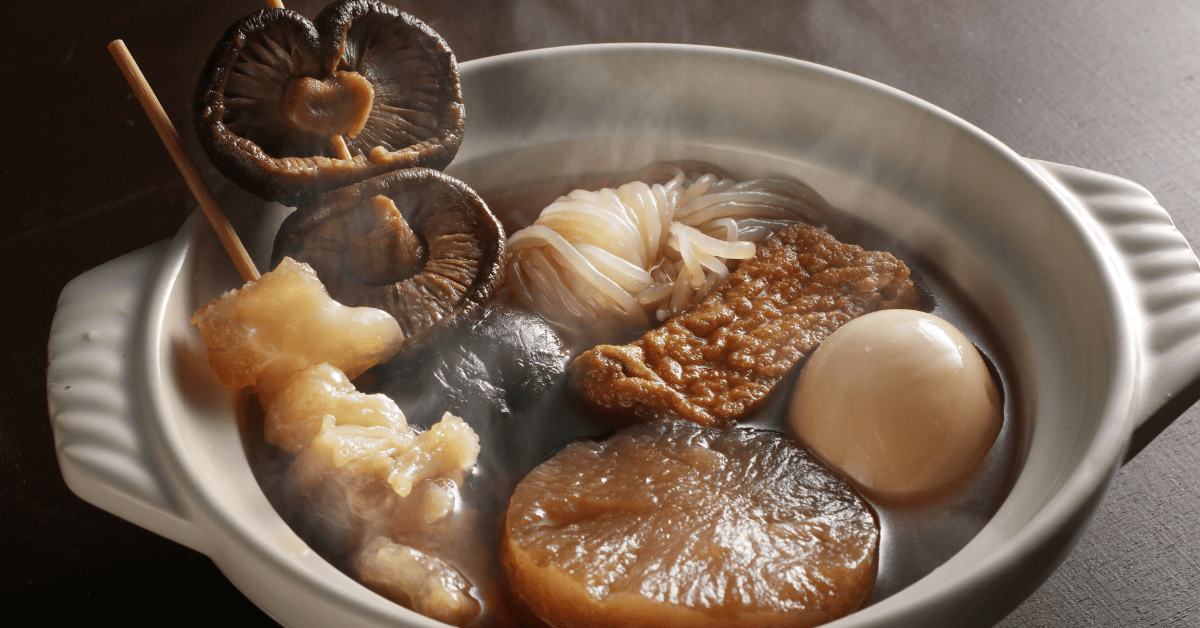Why Are Japanese Oldest Doctors Living Past 100? The Diet Secrets No One Tells You
Japan has the highest life expectancy in the world—84 years on average—and regions like Okinawa are famous for their “blue zones,” where centenarians are common. But what’s their secret? A recent YouTube video dives into the daily habits of Japan’s oldest doctors, revealing a diet so simple it’s almost shocking. Spoiler: It’s not fancy supplements or cutting-edge tech. It’s about eating the right foods—every single day. Let’s break down what these doctors eat, why it works, and how you can steal their strategies.
Who Are These Japanese Oldest Doctors?
We’re not talking about random folks in lab coats. These are actual practicing or retired Japanese physicians who’ve crossed into their 90s and 100s—still alert, moving, talking, advising.
Their names are harder to pronounce than your average fast food order, but their legacy is unmistakable. People like Dr. Shigeaki Hinohara (who passed away at 105) changed Japan’s healthcare landscape. These individuals are honored, not hidden away. Their voice? More like the final boss of wisdom.
What’s the Video Actually About?
At the core, the video preaches a lifestyle. It isn’t a diet trend or a TikTok “What I Eat in a Day.” It’s advice rooted in habit, ritual, and restraint. The viral line?
“If you eat these five foods every day and stay grateful, you’ll see 100 like it’s nothing.”
It sounds too simple, right? That’s because our modern lives made health complicated. This video simplifies it again.
The Big Revelation: “Just Eat These Every Day and You Will Live to 100”
The video centers on five staple foods that Japan’s longevity experts consume religiously. These aren’t exotic superfoods—they’re accessible, affordable, and backed by decades of research. Here’s the kicker: These doctors don’t just preach this diet; they follow it themselves. Many are in their 90s or 100s, still practicing medicine. Let’s unpack their plate.
1. Fermented Foods: The Gut-Healing Powerhouses
Why it matters: Over 70% of the immune system lives in the gut. Japanese diets prioritize fermented foods like miso, natto, and pickled vegetables. Dr. Hiroshi Shibata, 98, credits his daily bowl of miso soup for his “stomach that never quits.” Natto—sticky fermented soybeans—is loaded with Bacillus subtilis, a probiotic linked to reduced inflammation and better heart health.
The science: A 2022 study found that regular fermented food eaters have 15% lower rates of chronic disease. In Japan, regions with high natto consumption report fewer cases of osteoporosis.
How to try it: Swap morning toast for miso soup. Not a fan of natto’s slimy texture? Try tempeh or kimchi.

2. Fatty Fish: The Brain’s Best Friend
Why it matters: Japan eats 7 million tons of fish annually. Doctors like 102-year-old Dr. Sakura Tanaka eat salmon, mackerel, or sardines daily. These fish are rich in omega-3s, which protect against cognitive decline. “I’ve never forgotten a patient’s name—not once,” Tanaka laughs.
The science: Omega-3s reduce Alzheimer’s risk by 26%, per a Neurology study. Japan’s fish-heavy diet correlates with 60% lower dementia rates than the U.S.
Pro tip: Aim for 3–4 servings weekly. Grill, steam, or eat sashimi-style.
3. Bitter Melon (Goya): The Blood Sugar Regulator
Why it matters: Common in Okinawa, goya is a bumpy green fruit loaded with charantin—a compound that lowers blood sugar. Dr. Kenji Yamamoto, 94, calls it “nature’s Ozempic.” It’s often stir-fried with tofu and eggs in the dish goya champuru.
The science: A 2018 study linked bitter melon consumption to 32% lower diabetes risk. Okinawa, where goya is a staple, has 80% fewer diabetes cases than mainland Japan.
Not for everyone? If bitter flavors turn you off, try blending goya into smoothies with pineapple or mango.
4. Seaweed: The Mineral-Rich Superfood
Why it matters: Japan consumes over 100,000 tons of seaweed yearly. Varieties like nori, wakame, and kombu are rich in iodine, magnesium, and antioxidants. Dr. Aiko Nakamura, 99, snacks on nori strips instead of chips. “My thyroid? Perfect. My skin? No wrinkles,” she says.
The science: Seaweed contains fucoxanthin, a pigment that boosts fat metabolism. Studies show regular eaters have 12% lower obesity rates.
Easy add: Sprinkle dried seaweed on salads or mix into rice bowls.
5. Green Tea: The Longevity Elixir
Why it matters: Japanese doctors drink 3–5 cups of green tea daily. The star component? EGCG, a polyphenol that fights cancer cells and heart disease. Dr. Haruto Sato, 101, starts every morning with matcha. “It’s like washing your insides with antioxidants,” he says.
The science: Green tea drinkers have a 31% lower risk of cardiovascular disease. In Shizuoka, Japan’s top tea-growing region, life expectancy is 2–5 years above the national average.
Pro hack: Skip the sugary bottled versions. Brew loose-leaf sencha or matcha.
Bonus Foods
Miso Soup
Fermented Soybeans (Natto)
Sweet Potatoes
Green Tea
That’s it. No collagen powders. No protein bars. Just real, fermented, earthy food.
Science backs it too. These foods are packed with probiotics, antioxidants, fiber, and natural umami. Plus, they’re gentle on the gut and low in sugar. Your microbiome will sing songs of joy.

Blue Zones and Longevity – Is Japan Doing Something Right?
Japan—specifically Okinawa—is one of the world’s “Blue Zones.” These are regions where people live longer than average. The secret? Consistency.
Unlike the West, where we detox after bingeing, these regions maintain balance every single day. It’s like brushing your teeth—you don’t notice the benefit immediately, but 30 years later? Game changer.
The Mental Side of Longevity
“Your body lives long if your mind stays young.”
This quote from the video hits hard.
Japanese elders practice Ikigai—a reason to wake up. Whether it’s gardening, calligraphy, or spoiling their grandkids, they stay curious. That curiosity fuels joy. And joy keeps you alive.
Movement Over Muscle – Exercise Philosophy of the Elders
No gym selfies here. Just consistent, low-impact movement—walking, stretching, squatting.
Stats? Japanese elders walk twice as much daily compared to Americans. They get up and down from the floor unaided. Their knees? Still functional at 95. That’s flex culture done right.
Their Morning Routine Is Wildly Simple—And It Works
Wake up. Smile. Stretch. Sip warm water. Eat something warm and fermented.
That’s the playbook.
One doctor starts each morning with quiet breathing, facing the sun, expressing gratitude. No green smoothie required. The body responds to calm routines more than extreme ones.
Why They Rarely Snack – and What They Eat Instead
Enter “Hara Hachi Bu.” It means eat until you’re 80% full.
Japanese meals are small, intentional, and beautiful. You won’t find a Dorito in sight. Tea, especially matcha or barley tea, is sipped between meals to aid digestion and calm the nerves.
The Hidden Rule: “Hara Hachi Bu” – Eat Until You’re 80% Full
Portion control is key. The Okinawan practice of hara hachi bu—stopping before you’re stuffed—keeps calorie intake in check. Dr. Yumi Ishikawa, 96, explains, “Overeating strains the body. We eat to live, not live to eat.”
Stats: Okinawans consume 10–20% fewer calories than the average American, correlating with lower obesity and heart disease rates.
Timeline: How Japan’s Diet Evolved (And Why It Works)
1945–1955: Post-WWII food scarcity leads to reliance on rice, fish, and seasonal veggies.
1970s: Western diets creep in, but older generations cling to traditional meals.
1985: Japan’s government launches the “Healthy Japan 21” campaign, promoting fish and veggies over red meat.
2013: UNESCO designates washoku (Japanese cuisine) an Intangible Cultural Heritage.
2020s: Studies confirm link between traditional diets and Japan’s low COVID-19 mortality rates.
Global Reactions: Why the World Is Paying Attention
From Denmark’s seaweed farms to U.S. schools serving miso-glazed fish, Japan’s diet is going global. Dr. David Sinclair, Harvard longevity researcher, praises it as “the gold standard for aging gracefully.” Critics argue it’s too restrictive, but the proof is in the pudding—or rather, the natto.
Statistics That Will Blow Your Mind
Japan has over 90,000 centenarians, and it’s increasing yearly
Average life expectancy? 87 for women, 81 for men
Rates of heart disease, obesity, and Type 2 diabetes? Much lower than the US or UK
This isn’t just genetics. It’s environment, habits, and food. Always food.
What Does This Mean for the Rest of the World?
Can you move to Japan tomorrow? Probably not.
But you can:
Eat fermented foods
Walk 5,000+ steps daily
Practice gratitude and stillness
Avoid processed garbage
Stay socially connected
You don’t have to overhaul your life. Just tweak it—Japanese style.
Final Thoughts – Is Long Life Just About Food?
Not really. It’s food, plus:
Purpose
Joy
Movement
Stillness
Simplicity
The Japanese oldest doctors live proof that health isn’t a destination. It’s a rhythm. And now, thanks to a YouTube video, the whole world’s dancing to it.

What’s Next? The Future of Longevity Diets
With aging populations worldwide, Japan’s model offers a roadmap. Expect:
Plant-based seafood alternatives mimicking fish’s benefits.
Fermented food booms in grocery aisles.
“Blue zone” tourism in Okinawa, where visitors eat like locals.
FAQs: Your Burning Questions, Answered
What do Japanese doctors eat for breakfast?
Miso soup, grilled fish, rice, and pickled veggies.Do they eat sweets?
Rarely. Dessert is often fresh fruit or red bean paste (low in sugar).Is rice fattening?
Portion-controlled rice (1/2 cup per meal) provides energy without spiking blood sugar.Do they drink alcohol?
Moderately. Sake or shochu, 1–2 times weekly.Is the Japanese diet vegan-friendly?
Fish and dashi (fish broth) are staples, but tofu and seaweed offer plant-based options.How important is exercise?
Doctors walk daily and garden—low-intensity, consistent movement.Can I start this diet if I’m older?
Yes! Studies show dietary changes boost longevity at any age.What’s the #1 food to avoid?
Processed meats—linked to 72% higher heart disease risk.Is soy risky for hormones?
Fermented soy (natto, miso) is safe and beneficial in moderation.How do they handle stress?
Through ikigai (life purpose) and community—key for mental health.
Final Word: Steal Their Secrets, Live Longer
You don’t need to move to Okinawa. Start small: Swap soda for green tea, add seaweed to soups, or try a meatless Monday with tofu. As Dr. Tanaka says, “Longevity isn’t a secret—it’s a habit.”
Ready to dive deeper? Explore personalized health tips at Gemscor. Your 100-year-old self will thank you.














